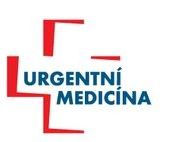INTRODUCTION
- Contents
- Editorial – Jana Šeblová
PAEDIATRICS IN EMERGENCY MEDICINE
- Triage at Paediatric Emergency Department – Jana Šeblová, Lucie Rokošová, Jitka Dissou
DIAGNOSTIC METHODS
- Terminology and structure of basic POCUS description of the thorax – Roman Škulec, David Halata, Dušan Zhoř, Jiří Nový
PHYSIOLOGY AND EMERGENCY MEDICINE
- Blood pressure non-invasive measurement – physiology, methods, mistakes in measurement – Roman Škulec, David Astapenko
EDUCATION
- Situation awareness in emergency medical services – Martin Sedlár
- How to pass the specialisation exam in emergency medicine? – Katarína Veselá, Jana Šeblová, Jana Kubalová
- Fished out from a social media network, this time in a different way – Jana Šeblová
ETHICS, PSYCHOLOGY, LAW
- How difficult is changing the trajectory of patients with progression of their life-shortening diseases within the care of emergency medical services? – Marek Uhlíř, David Peřan, Pavla Baťková, Adam Houska, Roman Procházka, Irena Závadová, Martin Loučka
DISCUSSION, OPINION
- Where with the patient? Still a current question – Ondřej Franěk
INFORMATION
- Ministry of Health of the Czech Republic approved guidelines for utilization of first responders in CR – A press release, 10th July 2021 – Anatolij Truhlář, Roman Gřegoř, Marek Slabý
- Information about XI. Central European Congress of Disaster end Emergency Medicine in Vyhne – Táňa Bulíková
- A new podcast on emergency medicine – Radek Mathauser, Tomáš Veleta, Petr Grenar
ABSTRAKTY
TRIAGE AT PAEDIATRIC EMERGENCY DEPARTMENT
Jana Šeblová, Lucie Rokošová, Jitka Dissou
Abstract
The authors present a manuscript describing the implementation of a triage system at the Emergency Department for Children at the Motol University Hospital. In the background, they summarize the matter of paediatric triage based on systematic literature search. In the practical part of the manuscript, they present the chosen triage system and its implementation procedures and conditions. In April 2019 after reconstruction and reorganization, which included relocation of an outpatient clinic to the proximity of the Emergency Department, a new three-degree triage system was implemented. The authors show the importance of these changes for patient safety and quality of medical care provision using statistical data on department operations and a few case reports.
Key words: paediatric emergency department – traige – paediatric triage systems – patient safety
TERMINOLOGY AND STRUCTURE OF BASIC POCUS DESCRIPTION OF THE THORAX
Roman Škulec, David Halata, Dušan Zhoř, Jiří Nový
Abstract
Point-of-Care Ultrasound (POCUS) has become an essential imaging diagnostic method in emergency medicine. In addition to the examination itself, a concise but correct description of the findings is very important. In this article, we summarize the structure and terminology for describing pleural, pulmonary and cardiac POCUS, including specific examples.
Key words: Point-of-Care ultrasound – description
BLOOD PRESSURE NON-INVASIVE MEASUREMENT – PHYSIOLOGY, METHODS, MISTAKES IN MEASUREMENT
Roman Škulec, David Astapenko
Abstract
Blood pressure is one of the most important parameters used in the initial management of a patient in both critical and noncritical condition. Incorrect measurement technique can generate measurement errors of up to tens of percent of the correct value. In this article, the authors provide an overview of the physiological and methodological aspects of non-invasive blood pressure measurement, including a summary of possible errors in measurement technique.
Key words: blood pressure – non-invasive measurement – errors
SITUATION AWARENESS IN EMERGENCY MEDICAL SERVICES
Martin Sedlár
Abstract
Situation awareness – knowing what is happening in an actual situation, what does it mean, and what may happen – represents one of the necessary preconditions of effective and safe performance. This article aims to introduce this concept in the context of emergency medical services. Besides defining individual elements of situation awareness and its influencing factors, the point here is to summarize findings concerning the importance of situation awareness and its relationship with different skills. Furthermore, an overview of ways how to assess and train situation awareness is also provided. Last but not least, recommendations which can help emergency medical services´ team members in developing and maintaining good situation awareness are also stated in the paper.
Key words: situation awareness – emergency medical services – recommendations
HOW DIFFICULT IS CHANGING THE TRAJECTORY OF PATIENTS WITH PROGRESSION OF THEIR LIFE-SHORTENING DISEASES WITHIN THE CARE OF EMERGENCY MEDICAL SERVICES?
Marek Uhlíř, David Peřan, Pavla Baťková, Adam Houska, Roman Procházka, Irena Závadová, Martin Loučka
Abstract
Home would be preferred place of end-of-life care for eighty per-cent of the Czech population. However, the reality is quite the opposite: 60 % of deaths occur in hospitals and 19 % in social services institutions. There is neither relevant clinical nor economical explanation for the fact that anticipatable deaths related to life-shortening diseases occur mostly during short-term, terminal acute hospitalization. Following an increased public interest, dying in Czechia is now undergoing a significant change. This case series study shows that clinical decision-making of the medical dispatching and field response units can play a crucial role in endof- life trajectories.
Key words: emergency medical services – medical dispatch center – end-oflife care – palliative care – paramedics – pre-hospital emergency care
